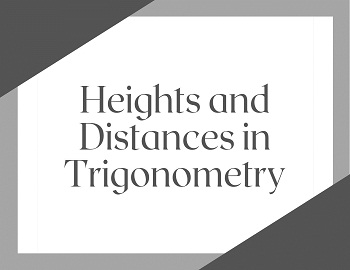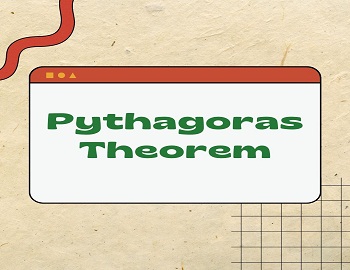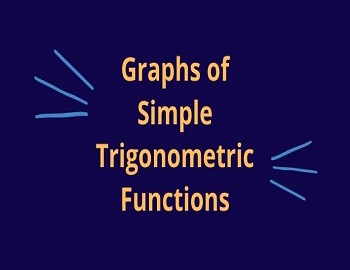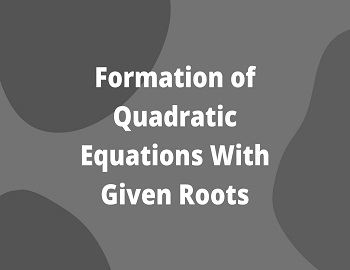Ratio and Proportion:
(1) Ratio- Antecedent, Consequent.
(A) Definition- The ratio of one quantity to another of the same kind expressed in the same units- is defined to express what multiple part or parts the former is of the latter. It is an abstract number- integral or fractional.
The ratio of one quantity “a” to another quantity “b”- both of the same kind and expressed in the same units is stated as a : b or a/b.
Thus $25 is five times as big as $5.
We say the ratio of $25 to $5 is as 5 is to 1 and is denoted by 5 : 1 or 5/1.
The quantity “a” is called the Antecedent and “b” the Consequent. The two together are called the terms of the ratio.
Note: Remember that the ratio exists only between two quantities of the same kind. Thus there is no ratio between 14 horses and 8 cows.
(B) Ratio and its Kinds:
(i) If the antecedent of a ratio is equal to the consequent, it is called a ratio of equality; as the ratio 3 : 3.
(ii) If the antecedent is greater than the consequent, the ratio is called a ratio of greater inequality; as the ratio 7 : 5.
(iii) If the antecedent is less than the consequent, the ratio is called a ratio of less inequality; as the ratio 3 : 5.
(iv) If the antecedent and the consequent of a ratio are interchnaged, the ratio so formed is called the inverse of the given one. Thus the ratio c : d is the inverse of the ratio of d : c.
(C) Theorems:
| Theorem 1: A ratio is unaltered if both of its terms are multiplied or divided by the same quantity. Proof: Since a/b = ma/mb ∴ a : b = ma : mb Also, (a/m) / (b/m) = (a/m) x (m/b) = a/b ∴ a : b = (a/m) ÷ (b/m) |
| Theorem 2: A ratio of greater inequality is diminished and a ratio of less inequality is increased by adding the same positive quantity to both its terms. Proof: Let a/b be the given ratio and let x be any positive quantity. Then (a + x)/(b + x) is the new ratio. Now (a/b) – [(a + x)/(b + x)] = (ab + ax – ab – bx)/b(b + x) = (ax – bx)/b(b + x) = x(a – b)/b(b + x) (a – b) is positive if a > b and it is negative if a < b Hence if a < b, (a + x)/(b + x) is greater than a/b |
| Theorem 3: A ratio of greater inequality is increased and a ratio of less inequality is diminished by subtracting the same positive quantity from both its terms. Proof: Let a/b be the given ratio and let x be any positive quantity. Then (a – x)/(b – x) is the new ratio. Now (a/b) – [(a – x)/(b – x)] = (ab – ax – ab + bx)/b(b – x) = (bx – ax)/b(b – x) = x(b – a)/b(b – x) As (b – a) is negative if a > b ∴ If a > b, (a – x)/(b – x) > a/b and (b – a) is positive if a < b Hence if a < b, (a – x)/(b – x) < a/b |
(D) Composition of Ratios:
(i) Compounded Ratio- When the antecedents of two or more ratios are multiplied to form the new antecedent and consequent are multiplied to form the new consequent, the new ratio thus obtained is known as their compounded ratio.
Examples-
- The compounded ratio of a : b and c : d is ac : bd.
- The compounded ratio of a : b, p : q and x : y is apx : bqy.
(ii) Duplicate Ratio- It is the compounded ratio of two equal ratios. Thus, the duplicate ratio of a : b is the ratio of a2 : b2.
(iii) Triplicate Ratio- It is the compounded ratio of three equal ratios. Thus, the triplicate ratio of a : b is the ratio of a3 : b3.
(iv) Sub-Duplicate Ratio- The sub-duplicate ratio of a : b is defined as √a : √b.
(v) Sub-Triplicate Ratio- The sub-triplicate ratio of a : b is defined as ∛a : ∛b.
(vi) Reciprocal Ratio- The reciprocal ratio of the ratio a : b is 1/a : 1/b i.e. b : a.
(E) Illustrative Examples:
| Example 1: If a : b = 5 : 6, find the ratio 3a + 5b : 2a – b Solution- ∵ a : b = 5 : 6 i.e. a/b = 5/6 or a = 5b/6 ∴ 3a + 5b : 2a – b = (3a + 5b)/(2a – b) = [3(5b/6) + 5b] / [(2(5b/6) – b] =[(5b/2) + 5b] / [(5b/3) – b] = (15b/2) / (2b/3) = 45/4 Hence 3a + 5b : 2a – b = 45 : 4 |
| Example 2: Two numbers are in the ratio 5 : 12. If 3 be subtracted from each, the ratio reduces to 2 : 9. Find the numbers. Solution- Let the numbers be 5x and 12x. After subtracting 3 from each, the numbers become (5x – 3) and (12x – 3). ∴ From the conditions of the problem, (5x – 3) / (12x – 3) = 2/9 ⇒ 45x – 27 = 24x – 6 ⇒ 21x = 21 ⇒ x = 1 ∴ The numbers are 5 and 12. |
| Example 3: The ages of two persons are now in the ratio of 5 : 4 and 9 years ago they were in the ratio of 4 : 3. Find their present ages. Solution: Let x be the present age of one person and y be the age of the second. x/y = 5/4 ∴ x = 5y/4 9 years ago their ages were (5y/4 – 9) and (y – 9). But the ratio of their ages was 4 : 3 ∴ [(5y/4 – 9) / (y – 9)] = 4/3 ⇒ 3(5y/4 – 9) = 4(y – 9) ⇒ 15y/4 – 27 = 4y – 36 ⇒ 4y – 15y/4 = 36 – 27 ⇒ y/4 = 9 ⇒ y = 36 ∴ x = 5y/4 = (5 x 36)/4 = 45 |
| Example 4: Show that [(a + c) / (b + d)] lies between a/b and c/d if a/b is greater than c/d. Solution: ∵ a/b > c/d ∴ a/b x b/c > c/d x b/c Hence a/c > b/d ∴ a/c + 1 > b/d + 1 Hence (a + c)/c > (b + d)/d ∴ (a + c) / (b + d) > c/d ……….(i) Again a/b > c/d ∴ a/c > b/d Hence c/a < d/b ∴ 1 + c/a < 1 + d/b or (a + c)/a < (b + d)/b Hence (a + c) / (b + d) < a/b or a/b > (a + c) / (b + d) ……….(ii) ∴ (a + c) / (b + d) lies between a/b and c/d. |
| Example 5: If (x – 1) : (2x + 1) is the triplicate ratio of 1 : 2. Find x. Solution: Triplicate ratio 1 : 2 = 1 : 8 But 1 : 8 = (x – 1) : (2x + 1) ……….(given) ∴ [(x – 1)/(2x + 1)] = 1/8 ⇒ 8x – 8 = 2x + 1 ⇒ 8x – 2x = 8 + 1 ⇒ 6x = 9 ⇒ x = 9/6 ⇒ x = 3/2 |
| Example 6: The present age of Liza and Catherine are in the ratio of 5 : 6, respectively. 7 yr hence, this ratio will become 6 : 7 respectively. What is Liza’s present age? Solution: Let the present age of Liza = 5x The present age of Catherine = 6x According to the question, (5x + 7) / (6x + 7) = 6/7 ⇒ 35x + 49 = 36x + 42 ⇒ x = 7 ∴ Present age of Liza = 5x = 5 x 7 = 35 yr |
| Example 7: The difference between two numbers is 120 and their ratio is 6 : 4. Find the numbers. Solution: Let first number = 6a and the second number = 4a According to the question, 6a – 4a = 120 ⇒ 2a = 120 ⇒ a = 60 Hence, first number = 6a = 6 x 60 = 360 and second number = 4a = 4 x 60 = 240 |
(2) Proportion-
(A) Definition- Four quantities a, b, c, d are said to be in proportion when the ratio of the first to the second is equal to the ratio of the third to the fourth i.e. when a : b = c : d.
This relation is also expressed as a : b : : c : d or a/b = c/d.
The quantities a and d are called the Extremes, while the quantities b and c are known as the Means. The fourth quantity d is called the Fourth Proportional to a, b, and c.
(B) Fundamental Theorems on Proportion:
| Theorem 1: If four quantities are proportional, the product of the extremes is equal to the product of the means. Proof: Let a, b, c, d be the proportional. Then a/b = c/d ∴ ad = bc Conversely, if the product of two quantities is equal to the product of the other two, the four quantities are in proportion. Proof: Let a, b, c, d be the four quantities. ∴ ad = bc Dividing both sides by bd, a/b = c/d or a : b : : c : d Hence the result. |
| Theorem 2: If four quantities are proportional, they are also proportional when taken inversely i.e. if a : b = c : d then b : a = d : c. Proof: a/b = c/d Cross multiplying we get, bc = ad Dividing both sides by ac we get bc/ac = ad/ac Hence b/a = d/c or b : a = d : c This is called Invertendo. |
| Theorem 3: If four quantities are proportional, they are proportional when taken alternately i.e. if a : b = c : d then a : c = b : d. Proof: a/b = c/d Multiply both sides by b/c a/b x b/c = c/d x b/c Hence a/c = b/d or a : c = b : d This is known as Alternando. |
| Theorem 4: If four quantities are proportional, the first together with the second is to the second as the third together with the fourth is to the fourth i.e. if a : b = c : d then a + b : b = c + d : d. Proof: ∵ a/b = c/d ∴ a/b + 1 = c/d + 1 Hence (a + b)/b = (c + d)/d or a + b : b = c + d : d This is called Componendo. |
| Theorem 5: If four quantities are proportional the excess of the first over the second is to the second as the excess of the third over the fourth is to the fourth i.e. if a : b = c : d then a – b : b = c – d : d Proof: a/b = c/d ∴ a/b – 1 = c/d – 1 Hence (a – b)/b = (c – d)/d or a – b : b = c – d : d This is called Dividendo. |
| Theorem 6: If four quantities be proportional, the sum of the first and second is to their difference as the sum of the third and fourth is to their difference i.e. if a : b = c : d then a + b : a – b = c + d : c – d. Proof: By Componendo, (a + b)/b = (c + d)/d ……….(i) By dividendo, (a – b)/b = (c – d)/d ……….(ii) Dividing (i) by (ii), we get, (a + b) / (a – b) = (c + d) / (c – d) or a + b : a – b = c + d : c – d This is called componendo and dividendo. |
(C) Continued Proportions- The quantities a, b, c, d, e, f, …. are said to be in continued proportion if
a/b = b/c = c/d = d/e = e/f = ….
In particular, three non-zero quantities of the same kind a, b, and c are said to be in continued proportion if the ratio of a to b is equal to the ratio of b to c i.e. a : b = b : c.
(D) Mean Proportional and Third Proportional- Let a, b, c be in continued proportion.
| Then, a/b = b/c ⇒ b2 = ac ⇒ b = √ac |
Here, “a” is called the first proportional, “b” is called the mean proportional, and “c” is called the third proportional.
(E) Illustrative Examples:
| Example 1: Find the fourth proportional to 4, 5, and 8. Solution: Let the fourth proportional = x Then, 4 : 5 : : 8 : x ⇒ 4/5 = 8/x ⇒ 4x = 40 ⇒ x = 10 ∴ the fourth proportional = 10. |
| Example 2: Calculate the third proportional to 16 and 8. Solution: Le the third proportional = x Then, 16 : 8 : : 8 : x ⇒ 16/8 = 8/x ⇒ 2 = 8/x ⇒ x = 4 ∴ the third proportional = 4. |
| Example 3: What will be the mean proportional between 9 and 49? Solution- Mean proportional = √(9 x 49) = 3 x 7 = 21 |
| Example 4: If b is the mean proportional between a and c, show that abc (a + b + c)3 = (ab + bc + ca)3 Solution: b is the mean proportional between a and c, therefore b2 = ac. Now (ab + bc + ca)3 = (ab + bc + b2)3 = b3(a + c + b)3 = b2 . b (a + c + b)3 = ac . b (a + c + b)3 = abc (a + c + b)3 Hence, abc (a + b + c)3 = (ab + bc + ca)3 |
| Example 5: If a + c = 2b and 1/b + 1/d = 2/c, then prove that a, b, c, d are proportional. Solution: Given that 1/b + 1/d = 2/c ⇒ (d + b)/bd = 2/c ⇒ cd + bc = 2bd ⇒ cd + bc = (2b)d ⇒ cd + bc = (a + c)d [∵ a + c = 2b (given)] ⇒ cd + bc = ad + cd ⇒ bc = ad ⇒ a/b = c/d Hence, a, b, c, d are in proportion. |









Comments (No)